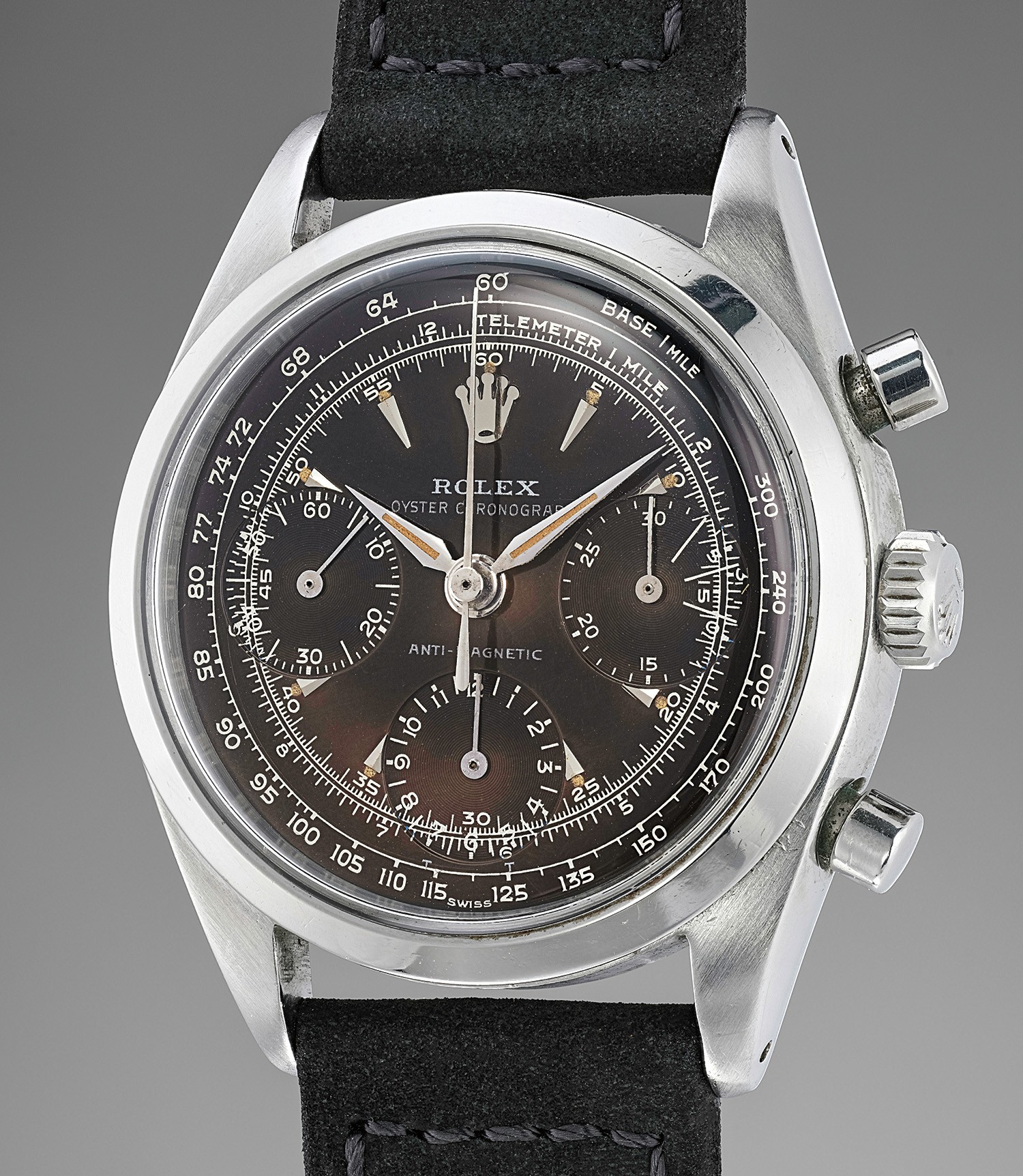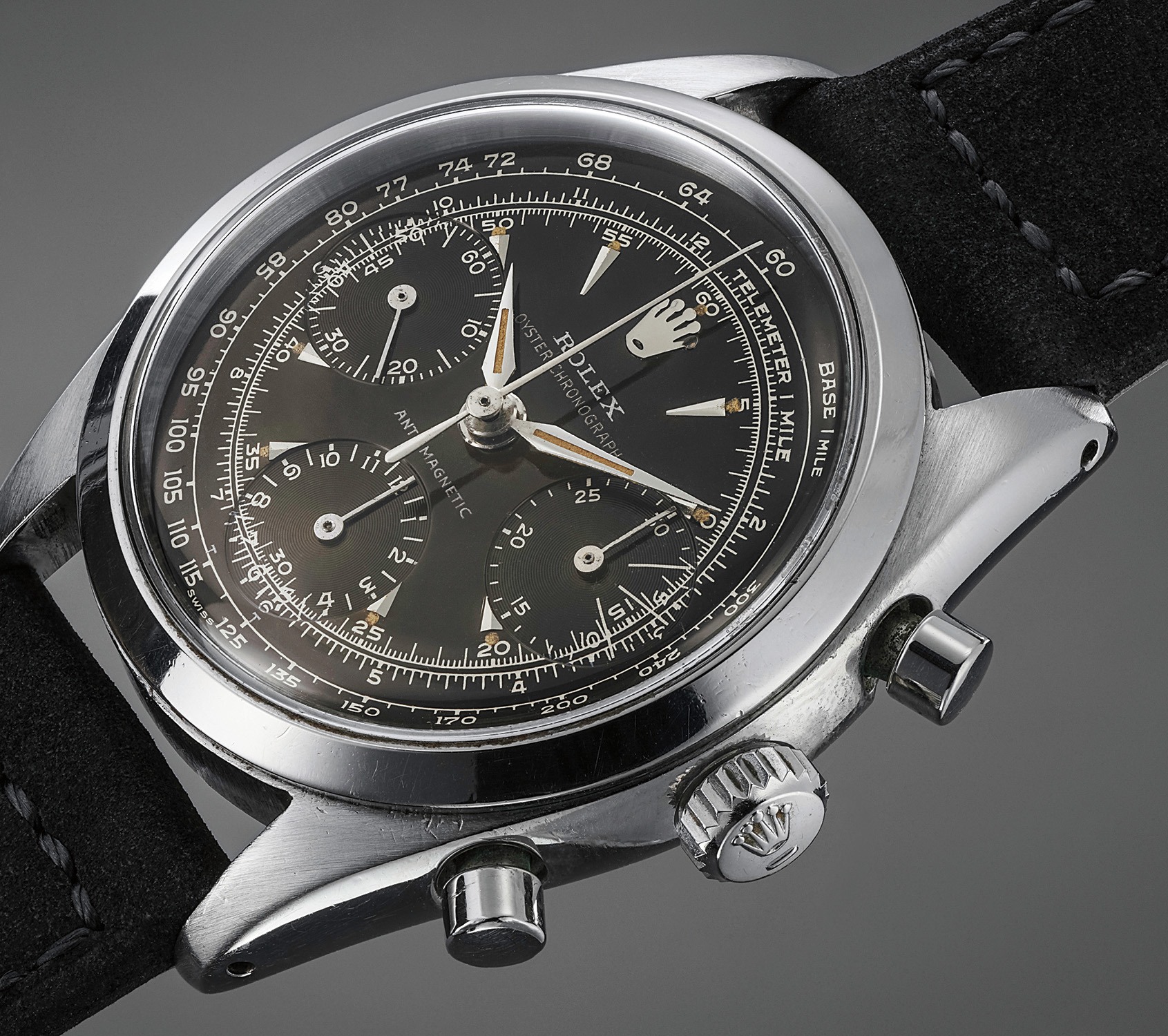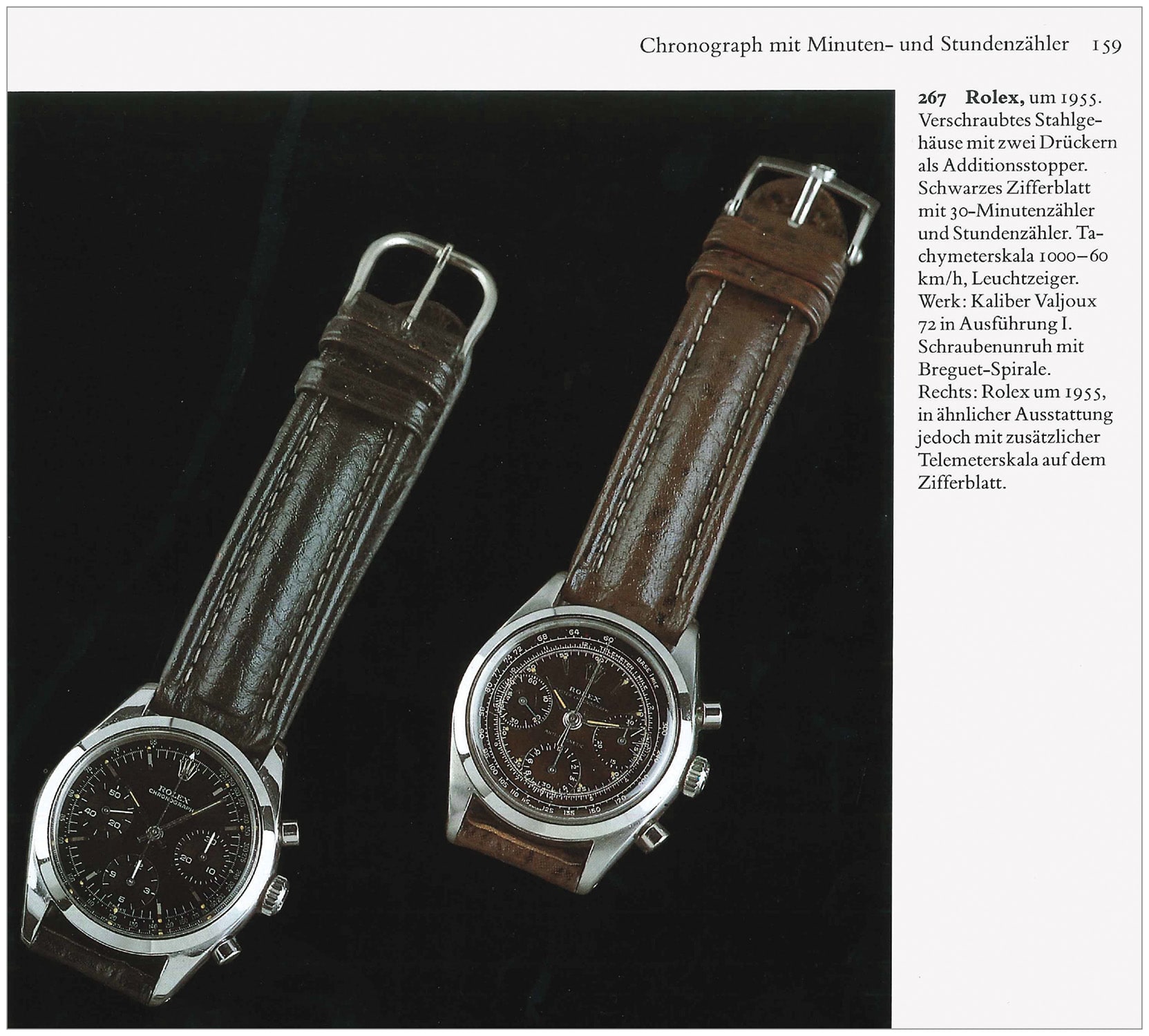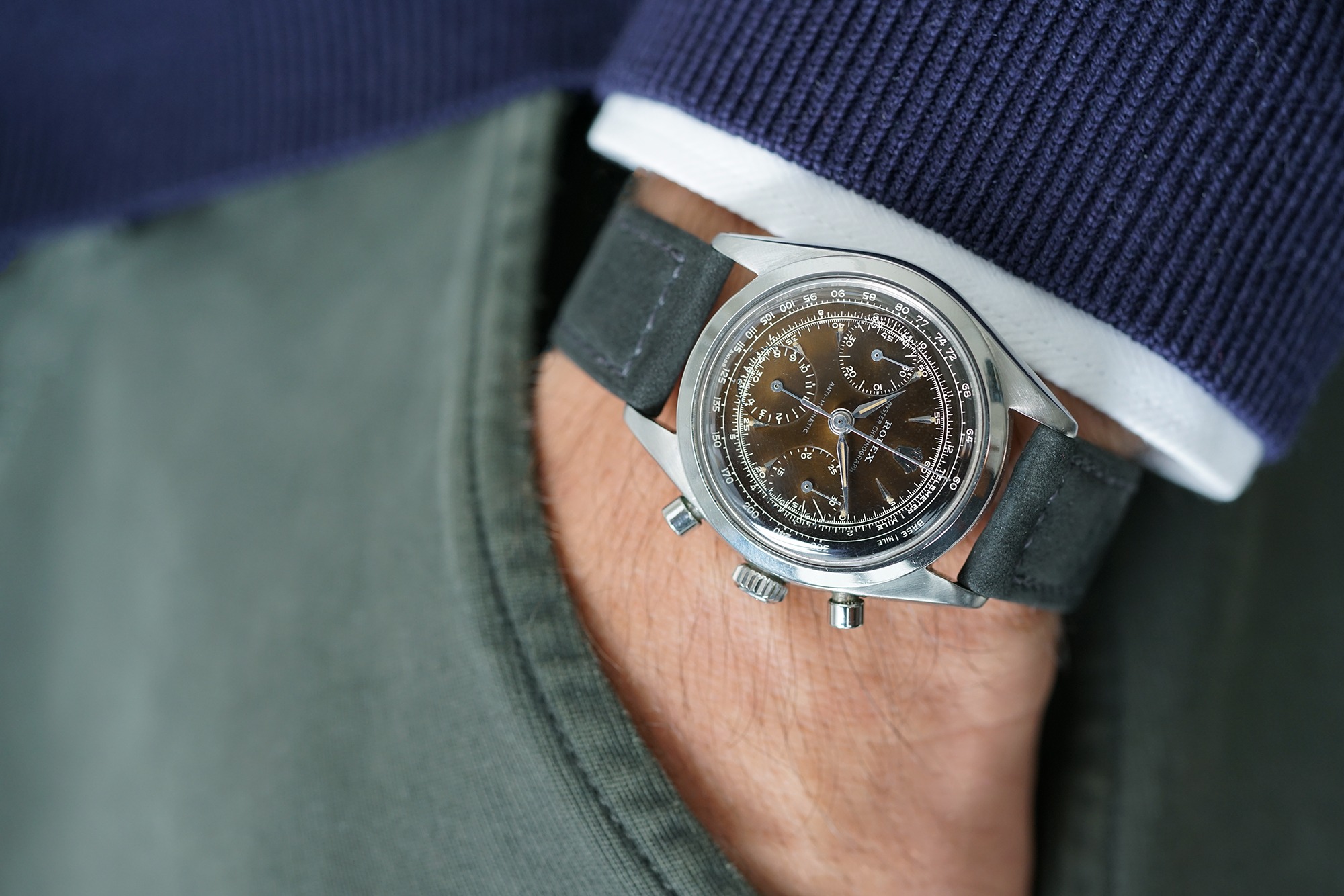











86
Rolex
Ref. 6238
Pre-Daytona
A very fine, extremely rare and highly important stainless steel chronograph wristwatch with "Suspended T" degradé brown tropical glossy dial
- Estimate
- CHF250,000 - 500,000€220,000 - 440,000$256,000 - 512,000
CHF492,500
Lot Details
- Manufacturer
- Rolex
- Year
- Circa 1964
- Reference No
- 6238
- Case No
- 1'207'146
- Model Name
- Pre-Daytona
- Material
- Stainless steel
- Calibre
- Manual, cal. 722, 17 jewels
- Bracelet/Strap
- Leather strap
- Clasp/Buckle
- Stainless steel Rolex pin buckle
- Dimensions
- 36mm Diameter
- Signed
- Case, dial, movement and buckle signed
Specialist
Full-Cataloguing
Catalogue Essay
The early 1960s were a transitional period in the history of watchmaking (and indeed dial-making) as authorities began to introduce regulations regarding the amount of radioactivity allowed for watches. Thus, the industry abandoned the highly radioactive radium lume and switched to the much less potent tritium. This created an issue for watchmakers: how do you inform the public of the presence of tritium rather than radium in dials?
We believe Rolex’s first attempt at creating this distinction consisted in adding a small line placed either at 12 or 6 o’ clock (known today as “underline” dials), but it was probably deemed too cryptic and eventually the company settled for small –T– letters (as in “Tritium") on either side of the “Swiss” designation, a much more distinguishable detail.
A side-effect of this transition is that the old stock of dials not bearing any indication of low radioactivity had to be modified in order to be mounted on tritium-illuminated pieces. Normally, the modification would consist of the addition of an underline or of Ts next to Swiss. The difference in the color and print style of the added details is quite obvious in dials from this time, and these rare items are now considered highly collectible as they exemplify the evolution dials underwent during this pivotal moment in time.
The present watch indeed is one of these transitional pieces, but it features a detail hardly ever seen on any other Rolex. The added Ts are not positioned either side of the “Swiss” designation, but are rather suspended between the subdial at 6 o’ clock and the tachymeter scale. This was probably done because the 115 and 125 mark of the scale would prevent proper positioning of the Ts next to “Swiss”. Not only this is a highly unusual dial layout, but it also provides very interesting insight into the semi-industrial manufacturing techniques of the time.
While the “Suspended T” dial of this piece is already more than enough to captivate the imagination of the most discerning collectors, it furthermore presents an additional, highly sought-after trait: the dial has gone “tropical”. In fact this is one of the strongest and most charismatic examples of a tropical reference 6238 to ever grace a saleroom. The dark gloss finish has acquired a strong tobacco/chocolate hue, with a darker tonality in the top half of the dial, and a lighter one in the bottom half. Surprisingly, the tropicalization process did not have any impact whatsoever on the quality of the gloss finish which remains virtually unspoiled, rather than having turned matte as often happens with such dials.
Given the superior condition of the watch , its rarity, and the extremely attractive and unusual dial tropicalization, the present piece is an unmissable opportunity for the collector of fine and important timepieces.
We believe Rolex’s first attempt at creating this distinction consisted in adding a small line placed either at 12 or 6 o’ clock (known today as “underline” dials), but it was probably deemed too cryptic and eventually the company settled for small –T– letters (as in “Tritium") on either side of the “Swiss” designation, a much more distinguishable detail.
A side-effect of this transition is that the old stock of dials not bearing any indication of low radioactivity had to be modified in order to be mounted on tritium-illuminated pieces. Normally, the modification would consist of the addition of an underline or of Ts next to Swiss. The difference in the color and print style of the added details is quite obvious in dials from this time, and these rare items are now considered highly collectible as they exemplify the evolution dials underwent during this pivotal moment in time.
The present watch indeed is one of these transitional pieces, but it features a detail hardly ever seen on any other Rolex. The added Ts are not positioned either side of the “Swiss” designation, but are rather suspended between the subdial at 6 o’ clock and the tachymeter scale. This was probably done because the 115 and 125 mark of the scale would prevent proper positioning of the Ts next to “Swiss”. Not only this is a highly unusual dial layout, but it also provides very interesting insight into the semi-industrial manufacturing techniques of the time.
While the “Suspended T” dial of this piece is already more than enough to captivate the imagination of the most discerning collectors, it furthermore presents an additional, highly sought-after trait: the dial has gone “tropical”. In fact this is one of the strongest and most charismatic examples of a tropical reference 6238 to ever grace a saleroom. The dark gloss finish has acquired a strong tobacco/chocolate hue, with a darker tonality in the top half of the dial, and a lighter one in the bottom half. Surprisingly, the tropicalization process did not have any impact whatsoever on the quality of the gloss finish which remains virtually unspoiled, rather than having turned matte as often happens with such dials.
Given the superior condition of the watch , its rarity, and the extremely attractive and unusual dial tropicalization, the present piece is an unmissable opportunity for the collector of fine and important timepieces.
Literature
Rolex
Swiss | 1905Founded in 1905 England by Hans Wilsdorf and Alfred Davis as Wilsdorf & Davis, it soon became known as the Rolex Watch Company in 1915, moving its headquarters to Geneva in 1919. Like no other company, the success of the wristwatch can be attributed to many of Rolex's innovations that made them one of the most respected and well-known of all luxury brands. These innovations include their famous "Oyster" case — the world's first water resistant and dustproof watch case, invented in 1926 — and their "Perpetual" — the first reliable self-winding movement for wristwatches launched in 1933. They would form the foundation for Rolex's Datejust and Day-Date, respectively introduced in 1945 and 1956, but also importantly for their sports watches, such as the Explorer, Submariner and GMT-Master launched in the mid-1950s.One of its most famous models is the Cosmograph Daytona. Launched in 1963, these chronographs are without any doubt amongst the most iconic and coveted of all collectible wristwatches. Other key collectible models include their most complicated vintage watches, including references 8171 and 6062 with triple calendar and moon phase, "Jean Claude Killy" triple date chronograph models and the Submariner, including early "big-crown" models and military-issued variants.
Browse Maker